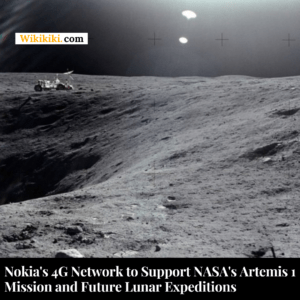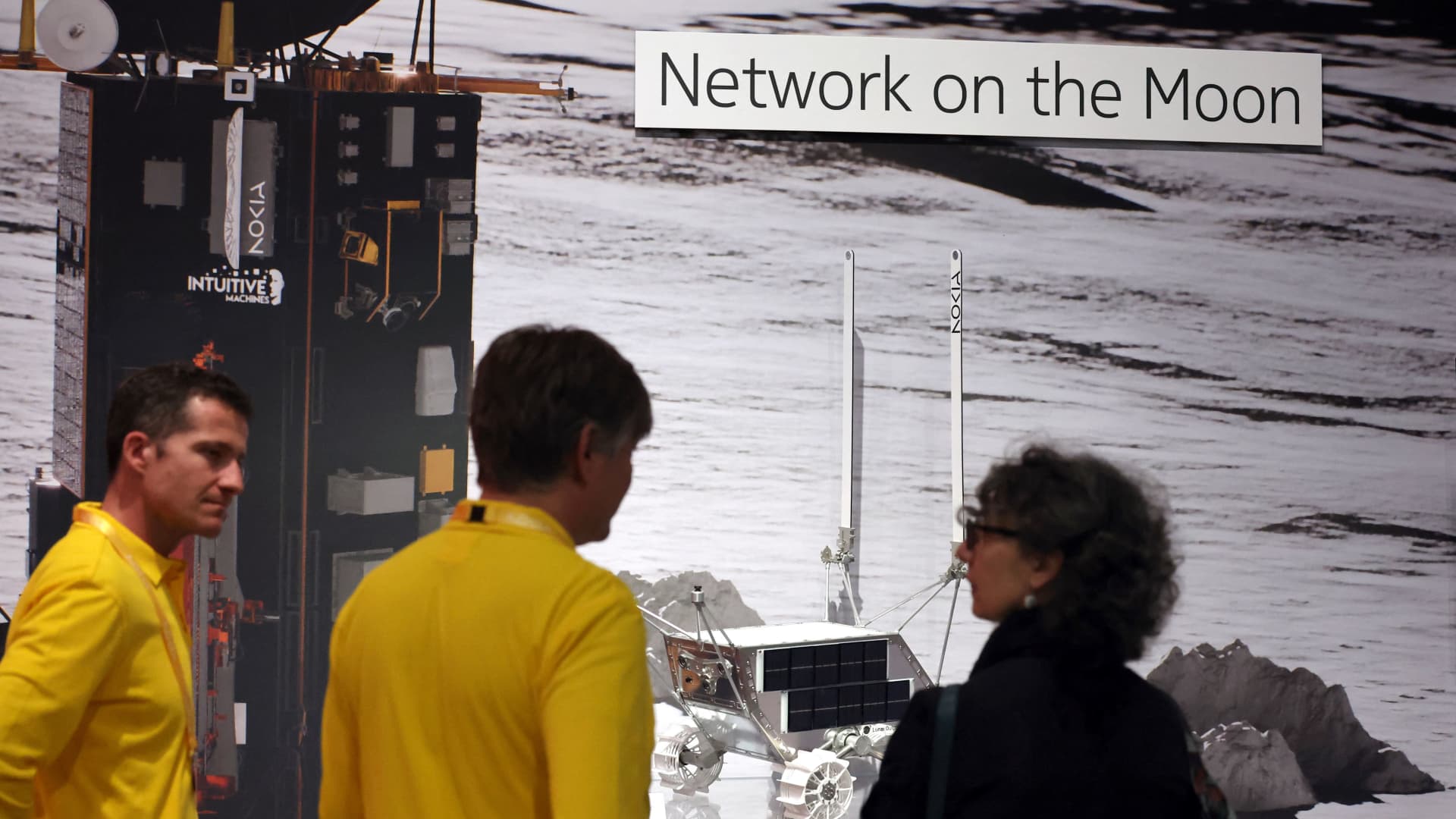Nokia has announced its plans to establish 4G networks on the moon to enable internet access on the Earth’s natural satellite. This move is expected to aid lunar discoveries and pave the way for human presence on the satellite planet.

Nokia has announced its plans to establish 4G networks on the moon to enable internet access on the Earth’s natural satellite.
The company is preparing to launch a 4G mobile network on the moon later this year, powered by an antenna-equipped base station stored in a Nova-C lunar lander designed by US space firm Intuitive Machines, as well as by an accompanying solar-powered rover.
The objective of the project is to establish a reliable communication network for future space missions, including NASA’s Artemis 1 mission, which aims to send the first human astronauts to walk on the moon’s surface since 1972.
The network will allow astronauts to communicate with each other and with mission control, control the rover remotely, and stream real-time video and telemetry data back to Earth.
Nokia’s lunar network will provide critical communication capabilities for many different data transmission applications, including vital command and control functions, remote control of lunar rovers, real-time navigation, and streaming of high definition video.
The network will be powered by an antenna-equipped base station stored in a Nova-C lunar lander designed by US space firm Intuitive Machines, as well as by an accompanying solar-powered rover.
The infrastructure will land on the Shackleton crater, which lies along the southern limb of the moon. The LTE connection will be established between the lander and the rover. Nokia says the technology is designed to withstand the extreme conditions of space.
The lander will launch via a SpaceX rocket, according to Luis Maestro Ruiz De Temino, Nokia’s principal engineer.
He explained that the rocket won’t take the lander all the way to the moon’s surface — it has a propulsion system in place to complete the journey.
Nokia’s lunar network is expected to have a significant impact on future space missions, including lunar exploration and potential future mining operations.
Anshel Sag, principal analyst at Moor Insights & Strategy, said that 2023 was an “optimistic target” for the launch of Nokia’s equipment.
“If the hardware is ready and validated as it seems to be, there is a good chance they could launch in 2023 as long as their launch partner of choice doesn’t have any setbacks or delays,” Sag told CNBC via email.
One of the things Nokia is hoping to achieve with its lunar network is finding ice on the moon. Much of the moon’s surface is now dry, but recent unmanned missions to the moon have yielded discoveries of ice remnants trapped in sheltered craters around the poles.
Such water could be treated and used for drinking, broken up into hydrogen and oxygen for use as rocket fuel, or separated to provide breathable oxygen to astronauts.
Mining requires a lot of infrastructure to be in place, and having the right data about where certain resources are located is crucial.
Nokia’s network can help in gathering such data and establish the necessary infrastructure to support lunar mining operations.
Rolls-Royce, for example, is working on a nuclear reactor to provide power to future lunar inhabitants and explorers.
With Nokia’s lunar network, future expeditions can continue to explore the moon and test the capabilities before starting to use it commercially for additional exploration and potential future mining operations.
The NASA Artemis 1 mission aims to send the first human astronauts to walk on the moon’s surface since 1972.
The mission is a critical milestone in NASA’s efforts to establish a sustainable human presence on the moon, with the ultimate goal of landing the first woman and the next man on the moon by 2024.
The success of the Artemis 1 mission depends heavily on reliable communication networks, which can enable real-time communication between the astronauts on the moon, the mission control center on Earth, and other ground-based assets.
The Nokia 4G lunar network can provide critical communication capabilities for the mission, including remote control of lunar rovers, real-time navigation, and streaming of high-definition video.
In addition to supporting the Artemis 1 mission, the Nokia lunar network can pave the way for future lunar exploration and mining operations.
With reliable communication networks in place, future expeditions can explore the moon more extensively, gather more data, and test the capabilities needed to support lunar mining operations.






















+ There are no comments
Add yours